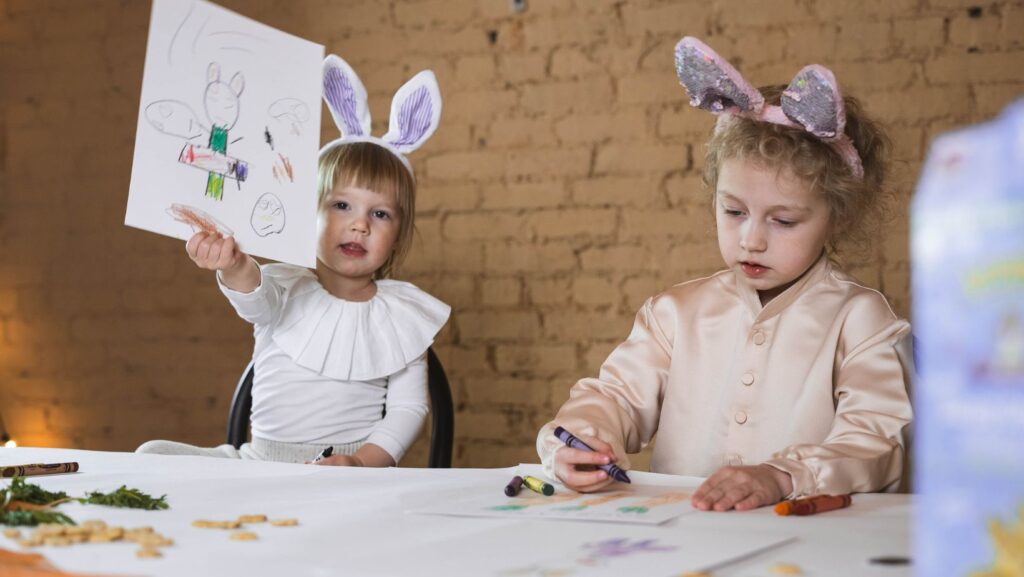Encouraging your child to embrace drawing is not just about honing their artistic skills; it’s about fostering creativity, self-expression, and critical thinking. From scribbles to more refined sketches, every stroke of the pencil represents a step in their artistic journey. In this article, we’ll delve into the enriching process of teaching your child how to draw, exploring the myriad benefits it offers beyond the mere act of putting pen to paper.
Creating a Supportive Environment:
- Providing a supportive environment is paramount when nurturing your child’s artistic abilities. Ensure they have access to quality art supplies, such as pencils, markers, and paper, and designate a space where they can freely explore their creativity without fear of judgment. Encourage them to express themselves openly and praise their efforts, regardless of the outcome.
Embracing the Joy of Scribbling:
- For young children, drawing often begins with scribbling, a natural and essential stage of artistic development. Encourage your child to embrace the joy of scribbling, as it allows them to explore mark-making and develop fine motor skills. Resist the urge to correct or impose structure during this phase, allowing their imagination to roam freely.
Introducing Basic Shapes and Lines:
- As your child grows, introduce them to basic shapes and lines, laying the foundation for more complex drawings.

Teach them to recognize circles, squares, triangles, and straight and curved lines, using simple exercises and games to reinforce these concepts. Show them how these shapes can be combined and manipulated to create a variety of objects and forms.
Exploring Colors and Textures:
- Drawing is not just about lines and shapes; it’s also an opportunity to explore colors and textures. Introduce your child to a vibrant array of hues and encourage them to experiment with mixing colors to create new shades. Explore different drawing surfaces and textures, from smooth paper to rough canvas, allowing them to experience the tactile nature of art.
Encouraging Observation and Imagination:
- Foster your child’s powers of observation by encouraging them to study the world around them with curiosity and attention to detail. Take nature walks together and point out interesting shapes, colors, and patterns for them to incorporate into their drawings. At the same time, nurture their imagination by encouraging them to invent their own fantastical worlds and creatures.
Providing Guidance without Imposing Constraints:
- While it’s essential to provide guidance and support, avoid imposing rigid constraints on your child’s artistic expression. Allow them the freedom to explore different styles and techniques at their own pace, offering gentle encouragement and constructive feedback along the way. Emphasize the process of creating art rather than focusing solely on the end result.
Celebrating Progress and Creativity:
- Celebrate your child’s progress and creativity, no matter how small or seemingly insignificant. Display their artwork proudly around the house, create a dedicated gallery space where they can showcase their creations, and encourage them to share their work with family and friends. By validating their efforts and fostering a sense of pride in their work, you’ll instill in them a lifelong love for drawing and artistic expression.
Exploring Specific Shapes:
- Introducing your child to specific shapes can spark their creativity and inspire new artistic endeavors. Consider exploring the unique form of a mushroom, with its distinct cap and stem. Drawing a mushroom provides an excellent opportunity to practice drawing circles for the cap and straight lines for the stem while also incorporating texture and detail.
Through this exercise, your child can learn about symmetry, proportions, and the importance of observation in capturing the essence of a subject. Moreover, the whimsical nature of mushrooms can ignite their imagination, leading to imaginative interpretations and creative storytelling within their artwork.
Teaching your child how to draw is not just about teaching them a skill; it’s about nurturing their creativity, imagination, and self-confidence. By providing a supportive environment, introducing them to basic concepts, and encouraging them to explore their artistic instincts freely, you’ll help them embark on a fulfilling artistic journey that will enrich their lives for years to come. So pick up a pencil, gather your child around, and embark on this creative adventure together.


